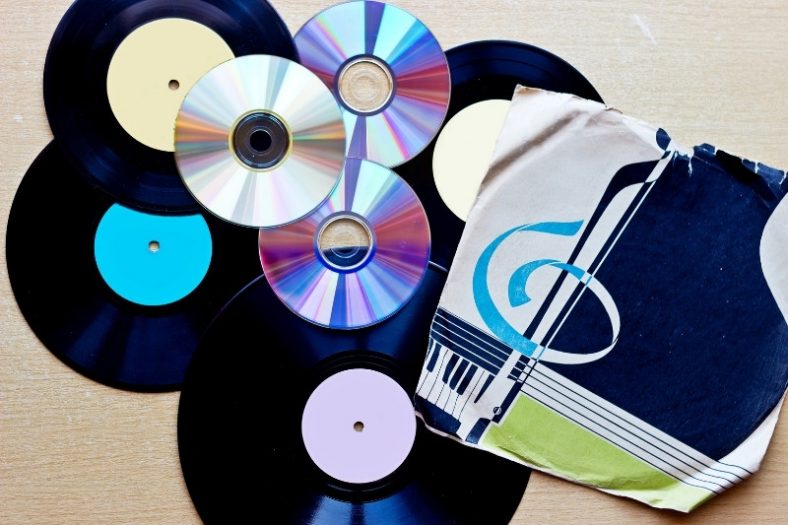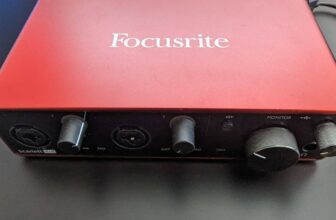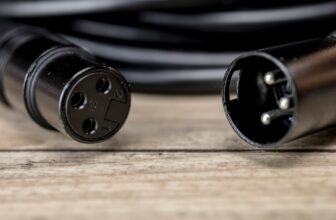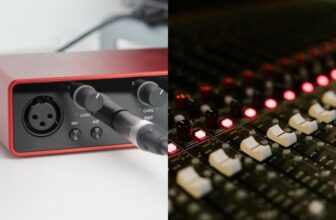Does Vinyl Sound Better? (The REAL Answer)

Vinyl and CD/digital audio sound different, but determining which sounds better is up to taste. While some people swear vinyl sounds better than CD, it’s hard to argue against the fact that the first is much more limited than the latter. From a purely technical standpoint, digital audio beats vinyl.
This ongoing debate is not just technical. In essence, it’s about the way people perceive and relate to musical objects (as in vinyl records and CDs). There are many biased views out there when it comes to comparing the sound quality of vinyl and CD, but I’ll do my best to deliver an impartial, fact-based opinion.
Contents
What Makes Vinyl and CD Different?
Vinyl is a 3D representation of a soundwave that was physically pressed onto a synthetic plastic material (i.e., vinyl), whereas CD audio is composed of binary code that was sampled in regular intervals. Sound is pressed into vinyl via an analog process, while audio is digitally encoded to CD.
The distinction between analog sound and digital sound is at the core of what makes vinyl and CD so different. Vinyl sound is deemed analog because changes in sound necessarily lead up to changes in the material structure of the record. In vinyl, for instance, loud sections of music take up more physical space than quiet sections of music.
This doesn’t happen on CD. Because CD audio is digital, every CD is materially identical regardless of how loud, long, expressive, or bassy a song is. Since CDs use a standard bit depth and sample rate, the only thing that changes from CD to CD is the way the binary structure of sound is organized.
Why is CD Better Than Vinyl?
CD is better than vinyl because it allows for a more versatile and complete reproduction of sound.
CDs rely on a constant bit depth of 16 bits and an equally-constant sample rate of 44.1 kHz. This means that CDs can have a very detailed dynamic range and play every humanly-perceived frequency.
This sounds scarily technical, but it’s simpler than it seems. Bit depth is nothing but a value that regulates the number of possible amplitude levels in a sample. Bit depth is essential for dynamic range because it’s the metric that determines how many quiet vs. loud sounds can coexist in a waveform. With a bit depth of 16 bits, CDs can accurately reproduce over 65,000 different volumes within a single sample.
As for the sample rate, it is merely the number of times a waveform sample is captured per second. The more samples per second, the more accurate the recreation of sound and, most importantly, the wider the available frequency range.
With a sample rate of 44.1 kHz, CD boasts approximately twice the frequency range of human hearing. This means that there are more frequencies available in CD audio than the frequencies our ears can capture.
So, CDs make for an extremely accurate and versatile way of listening to music. There’s so much room for information in a CD that most CDs will even contain frequencies humans will never be able to notice! But why does this make CD better than vinyl?
The Limitations of Vinyl
Unlike CDs, vinyl records have limited dynamic and frequency range. Since the way sound behaves affects the physical properties of vinyl, engineers need to compromise, so tracks can fit safely into a record.
While CD is equipped to play any song—no matter the complexity of its dynamics or frequency range—vinyl has trouble dealing with low frequencies, very high frequencies, and loud sounds.
The Issue With Vinyl’s Dynamic Range
The available dynamic range in CD is 90dB, while vinyl only has up to 70dB of dynamic range. This means that the difference between the quietest point in a song and the loudest point in a song is larger on CD than vinyl. Naturally, this can affect sound quality, especially if you think of highly-dynamic music genres such as classical music.
This happens because the amount of time you can fit on a vinyl record depends on the track’s loudness. The louder the track, the more material it’ll need to be reproduced. For this reason, vinyl songs tend to be necessarily quieter (and hence less dynamic) than their CD counterparts.
This issue was aggravated since the introduction of stereo, as the vinyl stylus has to move in two different directions to create a right and left channel. This also impacted the way vinyl deals with bass sounds.
The Issues With Vinyl’s Frequency Range
The way a song sounds changes the way a vinyl record is, affecting its material structure. Just like loud sounds take up more physical space than quiet sounds, so do bass sounds. Low frequencies are dangerous in vinyl because they can cause the stylus to move around, leading up to crackles and inaccuracies.
Like very dynamic songs, very bassy songs also take up a lot of space in the record. For this reason, low frequencies are very limited in vinyl and, as we’ll see, they’re excluded from the song from the very start. The same applies to very high frequencies, albeit for a different reason.
Very high frequencies are limited in vinyl because the space used to reproduce them can be thinner than the tip of the stylus. This can lead to inaccuracies, as well as unwanted distortion. That’s why vinyl tracks tend to be specifically mastered for the purpose, often using a standard equalization scheme named after the Record Industry Association of America (RIAA).
The Role of the RIAA Equalization
The RIAA equalization is a scheme designed to adapt audio to vinyl. For audio to be accurately and safely reproduced on a record, it needs to be tamed in terms of stereo depth and frequency range.
The process is simple: super low frequencies get cut out, very high frequencies are excluded with de-essing, and wide bass sounds are converted to mono, so they can take up less physical space in the record. That’s RIAA equalization in a nutshell!
RIAA equalization works wonders, but there’s no doubt it poses a few limitations to vinyl. When mastering for CD, engineers are hardly subjected to the same strict rules and can make the most of a song’s stereo depth, frequency range, and dynamic feel.
Why is Vinyl Better Than CD?
Vinyl is better than CD because it makes for a more immersive music-listening experience.
While vinyl is more technically limited than CD, it is a more charming format. In addition, many people like how vinyl records sound precisely because their frequencies and dynamic range are limited.
Vinyl enthusiasts also claim that vinyl is better than CD because analog audio is more authentic than digital audio. While digital waveforms are made out of zero’s and one’s, vinyl waveforms are perfect, smooth waves, closer to the way humans perceive sound in nature.
Most importantly, though, vinyl is better than CD because it’s a more fun music format. The ritual of putting the record on the turntable and dropping the needle is part of the charm of listening to music on vinyl. The artwork is bigger, and there’s something inherently enjoyable about picking up a vinyl record and organizing a vinyl record collection.
For some people, the way vinyl audio sounds (per the RIAA equalization standard) is better than the way most digital audio tracks sound. Because of its dynamic range limitations, vinyl isn’t trying to be as loud as possible and doesn’t take part in the controversial loudness wars. Because of its frequency limitations, vinyl tends to have a warm sound, with clear bass grooves and a nice, rounded set of top frequencies that sit right with the human ear.
While the things that make vinyl better than CD aren’t exactly fact-based—depending on subjective taste and experience rather than technical specifications—they’re at the core of why vinyl got such a strong comeback over the last two decades. To many music fans, vinyl is simply more romantic and fun! Once deemed a dying format, vinyl proved again and again that it will most likely never disappear.
Is Vinyl More Durable Than CD?
Vinyl is more durable than CD, and a well-treated vinyl record can last for hundreds of years. However, taking good care of a vinyl record demands a lot of attention to detail, and turntables tend to wear out over time, which leads up to additive playing speed inaccuracies.
Summary
There’s no definite answer in the ongoing analog vs. digital audio debate. While some people prefer to listen to analog sound and buy vinyl records, others find the high-definition of digital audio better. In the end, sound quality can be a concept as elusive as musical quality: technicalities aside, it’s up to each one’s taste and interpretation.
Vinyl beats CD because it makes for a more comfortable and charming way of listening to music. The records are very beautiful, and so is the process of playing a record on a turntable. CD, however, isn’t technically limited in any significant way, empowering both musicians and engineers in a way that vinyl doesn’t.
I analyzed the main differences, pros, and cons of vinyl and CD, and I can’t still figure out which one’s best. I guess that, as a music enthusiast, I’m simply thankful that I get to enjoy both formats.





